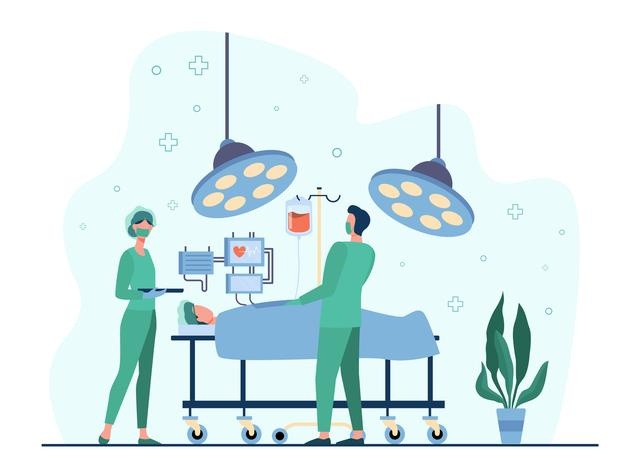What is Varicose Vein?
Varicose Vein
The blue, enlarged veins seen on the lower legs and feet are called varicose veins. Varicose veins are one of the most common diseases that are seen in people. Any vein that is in close proximity to the surface of the skin will succumb to varicose, however, the veins in the lower body are the ones that are most affected by it. However, not everyone with varicose veins requires medical attention, mild cases of varicose veins are only a cause for cosmetic concern and don’t really affect the health of the person. Although, varicose veins might also be very hard to deal with. Severe cases will completely disrupt the normal life of the affected person.
Endovenous Laser Ablation Treatment
Varicose veins are blue, enlarged veins that are seen on the legs and feet of people. They are found in people over the age of 50 and in people who walk or lift weights. These veins often get enlarged because they get filled with blood; this gives the veins a purplish-blue hue and causes discoloration in the surrounding areas. Varicose veins can be extremely painful and if the veins rupture, it can use intense bleeding. The veins in the lower body work against gravity in terms of circulation. There are many valves in the veins that will open and close while carrying blood to the upper body. These valves only open upwards and close when the blood is carried up. However, prolonged standing or lifting weights will put pressure on these veins and the valves stop working. This leads to blood pooling in the veins and results in varicose veins.
- PROCEDURE NAME : Endovenous Laser Ablation Treatment
- SURGERY TYPE: Minimally Invasive Laser Surgery
- HOSPITALIZATION: 1 Day
- SURGERY DURATION: 45 Min
- ANAESTHESIA: Spinal Block / General Anaesthesia
- FULL RECOVERY: 3-4 Days
TREATMENTS
Diagnosis
Varicose veins are relatively easy to diagnose as opposed to other medical conditions. The doctor will examine the patient’s legs, by putting them in positions like sitting or standing. Doctors will enquire about any pain or discomfort caused and the patients’ medical history. The doctors will do an ultrasound to assess the blood flow. The location of the varicose veins might differ, based on this location a venogram might be performed as well. In certain cases, a Venous Dobler scan might also be done.
Surgery

After diagnosing varicose veins, the doctor will advise making changes in the patient’s lifestyle. They will advise not to stand for too long, to maintain a healthy weight; they will also prescribe compression socks. That is the first stage of treatment. These practices will help to reduce pain and discomfort to a great extent. However, in severe cases, surgery is required. The only way to get rid of large veins is to surgically remove them. Vein stripping and ligation is used to treat varicose veins. In this, two incisions are made on the upper leg and then near the ankle. Then the tip of the vein is sealed by tying it up, then a thin wire is threaded and pulled out through the bottom. The vein also comes with this. The vein is stripped. Another alternative is Sclerotherapy. It is a single procedure in which the doctor injects medicine inside the veins. This is done of varicose veins that are medium or small. After the medicine is injected the vein should fade away in a couple of days. However, a single vein might need to be injected more than once to get the desired effect. Radio Frequency Ablation is also practiced for this particular condition. While performing an RFA, the medical professional will make a small cut below or above the knee. Then a catheter or a thread is inserted into the cut. Then, through the catheter, the doctor will insert a probe; this probe has the ability to emit radiofrequency energy which will heat up the veins. This will result in the closing of the vein because the heat causes the walls of the veins to collapse. Laser treatment is the safest and most innovative way to deal with varicose veins. Endovenous Laser Treatment is a minimally invasive surgery that decreases the chances of recurrence and doesn’t require aftercare. To do this, a catheter is inserted into the patient’s veins, and through this catheter, a small laser enters the patient. This laser is equipped to deliver short bursts of energy that will heat up the vein which will burn and seal it. It is one of the best ways to treat varicose veins. However, these methods might not be advised if the patient is pregnant or breastfeeding, has deep venous thrombosis, has suffered a heart attack or the patient’s health is poor.
Causes
- obsicity
- Lifting heavy weights
Symptoms
- Discomfort while sitting
- Painful bowel movements
- Swelling & Itching
- Excessive Bleeding
Frequently Asked Questions
How can I prevent varicose veins?
Avoiding standing or walking for prolonged periods of time will help with varicose veins. Wearing compression socks and healthy exercises will go a long way.
Are varicose veins treatable?
Yes. Varicose veins are highly treatable and there are many options available in the market such as surgery, laser treatment, etc.
Do compression socks help with varicose veins?
Compression socks are one of the first treatments that are suggested. The soaks will help to keep the veins from rupturing.
What tests are suggested for varicose veins?
An ultrasound scan is done to assess the blood flow and sometimes a Venous Doppler scan is done.
What are the major symptoms of varicose veins?
There will be twisted and enlarged veins in the lower body of the patient. There will also be pain, rupture, discoloration in the area, etc.
[metaslider id="2120"]

